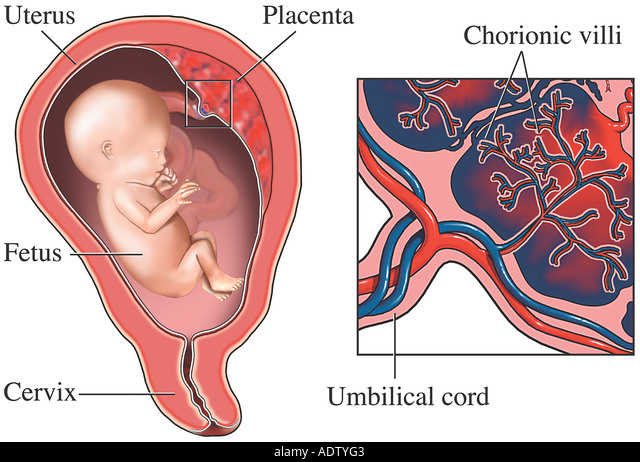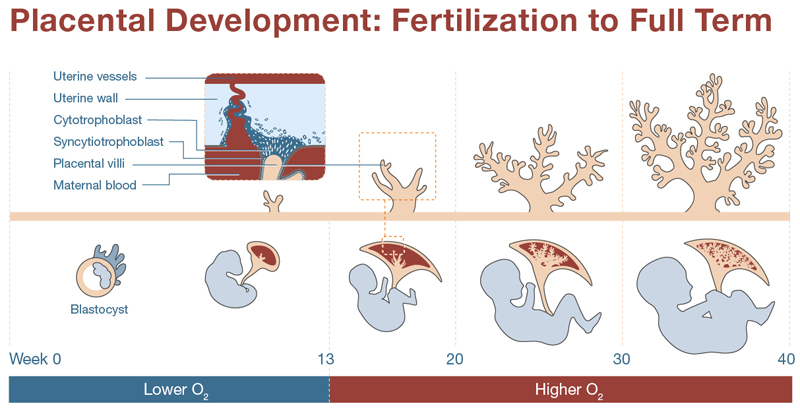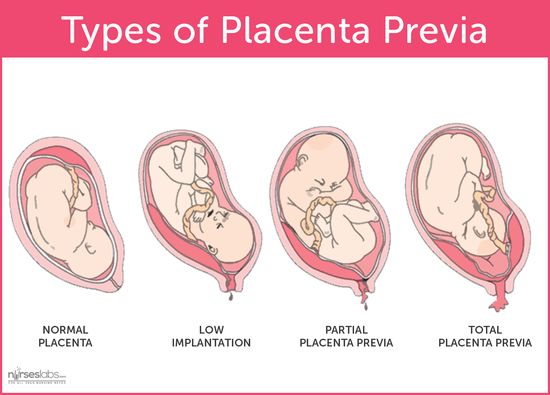
Sophia McCarthy
Operations Manager
During a pregnancy ultrasound scan, the sonographer will always check the condition of your placenta alongside your baby. This is because the placenta is a crucial organ during pregnancy. The placenta itself, its formation and its functions are really incredible—it’s amazing what your body can do to create a healthy happy baby!
What is the placenta and how does it form?
The purpose of the placenta is to deliver oxygen, nutrients, antibodies and hormones to your baby while it’s in the womb, and this is transported through the umbilical cord. It also removes harmful waste and unnecessary nutrients. To go into more medical detail, the placenta is mostly comprised of blood vessels contained within structures called “villi.” It is these blood vessels that connect with the baby’s bloodstream through the umbilical cord. The villi are tiny projections of placental tissue that look like fingers and contain the same genetic material as the fetus.

The placenta is a temporary organ, meaning that it wasn’t there before you fell pregnant, and only begins to form when you fall pregnant. To be more exact, it begins to take shape when a fertilized egg attaches onto the wall of the uterus. The placenta leaves the body when it is delivered shortly after your baby is born.
The placenta will usually form at the top, side, front or back of the uterine wall, but this may vary from person to person. Sometimes the placenta will develop low in the uterus but will generally move higher as your uterus stretches. The position of the placenta can be checked throughout the pregnancy using ultrasound.
At the early stages of pregnancy, when the baby is practically microscopic, the placenta is a low-oxygen organ. As the baby gets bigger, the placenta will grow and branch out like a tree to meet the baby’s oxygen and nutrient demand. This helpful diagram below from The Human Placenta Project shows the stages of placenta development:

How can I keep the placenta healthy?
It’s important that you visit your healthcare provider regularly during pregnancy and attend your scheduled ultrasound appointments. These regular check-ins can identify and monitor any potential issues with the placenta. At these appointments, make sure you let medical practitioners know if you have had problems with the placenta in a previous pregnancy, or if you have had any surgery to your uterus.
If there is a critical issue with the placenta, this may be life-threatening to both mum and baby. This is why it is crucial that if you experience any of the following issues that you contact your midwife or doctor immediately: severe abdominal (stomach) pain or back pain, vaginal bleeding, contractions or any trauma to your abdomen (for example, from a fall or car accident).
Alcohol, nicotine, medicines and other drugs can be transferred to the baby via the placenta and can affect your baby’s health and developmental growth. If you drink alcohol or smoke or take certain drugs during pregnancy, this increases the likelihood of problems with the placenta such as preterm placental calcification. Similarly, you should ask your doctor before you take any natural remedies, vitamin supplements or over-the-counter medicines to make sure that they are safe during pregnancy.
What issues can affect the placenta?
Placenta Previa
Placenta Previa is a condition where the placenta forms low in the uterus, near the opening of the uterus (cervix), and can partially or completely block the neck of the cervix. This interferes with a vaginal birth and may require a cesarean depending on how severe the block is. This can be identified and monitored with regular ultrasounds and baby may need to be delivered via a scheduled c-section.

Placental Calcification
Placental calcification, which can also be identified on ultrasound during pregnancy, is characterized by a widespread deposit of calcium on the placenta. The level of calcification commonly increases towards the end of your pregnancy, and can be visible on ultrasound after 36 weeks gestation. If your sonographer spots this process happening before 36 weeks gestation, it is considered to be preterm placental calcification.
Placental Abruption
Placental abruption is when the placenta separates from the uterus. Symptoms can include bleeding and abdominal pain, especially during the third trimester.
If you would like some reassurance during your pregnancy, we provide well-being ultrasounds throughout all three trimesters, where we will also check the placenta. Our full list of pregnancy scans can be viewed HERE.
If you would like more information on anything covered in this post, you can get in touch via info@theultrasoundsuite.ie or send us a message on our Facebook page and we will get back to you as soon as possible. Our website www.theultrasoundsuite.ie also provides a wealth of information on our various policies and procedures.
REFERENCES AND FURTHER READING
Pregnancy, Birth & Baby: About the Placenta
Cleveland Clinic: What Is The Placenta?
Human Placenta Project: How Does the Placenta Form?
